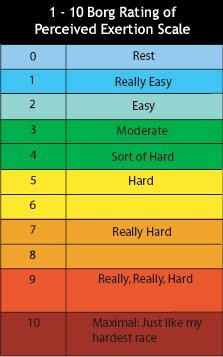It’s All About Intensity
I’m sure you’ve heard about the importance of incorporating exercise into your life, but do you do it? Keep reading to see how intensity is the key factor.
A physical disability can limit your “daily activity” simply because you are not moving as much as an able-bodied person can. This increases your risk for heart disease, diabetes, respiratory infections, urinary tract infections (UTI) and even certain forms of cancer. The good news is that exercise can lower the risk of all of these complications!
Rehabilitation therapies are very important. As a physical therapist, I know the value in getting as much therapy as you can during all stages of recovery. Therapy tends to focus on functional training: how to get out of bed, how to transfer, walk, etc. There may be some exercises your therapist gets you to strengthen the weak muscles to contribute to improved mobility.
However, therapy sessions rarely focus on improving your cardiovascular fitness. There are a number of reasons for this, but mainly if therapists have limited time to spend with you individually, that time is best spent working on the activities you need their skills to improve. Unfortunately, many therapists often skip the important discussion of incorporating an exercise routine outside of your therapy sessions. If you have any questions about if you’re safe to exercise, how to exercise and options of where to exercise, make an appointment with your physical therapist.
What is exercise?
The definition of exercise is “physical activity that is planned, structured and repetitive for the purpose of conditioning any part of the body. Exercise is used to improve health, maintain fitness and is important as a means of physical rehabilitation.” The reason this is important is because exercise goes above and beyond your daily activities. Doing housework or yard work is physical activity, but it’s not exercise. And the difference can often be clarified by considering the intensity at which you feel like you’re working.
Let’s focus on cardiovascular exercise, also known as aerobic exercise. This is your pushing, swimming, cycling, dancing, etc. It’s activity that can be sustained and improves your endurance. Aerobic exercise enhances glucose regulation (i.e. helps manage or prevent diabetes,) improves blood pressure and improves arterial function. It can also help improve your memory, and decrease depression and anxiety.
Heart rate is one way to monitor your intensity, however there are a number of factors that can impact your heart rate’s response to exercise. There are medications that may impact heart rate; if your SCI impacted your autonomic system, your heart rate response may not be reliable; etc. Rather than getting a heart rate monitor, there is a simple 1-10 scale that you can use.
One is resting, probably how you feel now. Ten is that all out sprinting effort that can’t be sustained for very long.
For your aerobic exercise, you want to workout in the 4-6 range. It should feel effortful, and you may be short of breath, but could still have a conversation. If you’re not getting tired by the exercise, it probably is in that 2-3 range. Housework and yard work is in this 2-3 range.
Your level of effort is unique to you. Your 5 may be different than your spouse’s 5.
Think about this scale the next time you’re exercising – and if you are not reaching that 4-6 level, think about how to get up there safely. As your fitness improves, it’ll take more work to get to the same intensity. That’s great! It means you’re getting stronger and reaping the benefits of your work. But it also means you can’t get complacent with your exercise routine, and you’ll need to step it up.
When I ask people what their exercise routines consist of, I often hear their physical therapy schedule, which we have already discussed and it is different than exercise. Or I hear that they push their wheelchair or walk, which is great. But I follow up by asking if you’re walking at an intensity that constitutes exercise, and if not, that needs to be a new goal. Also, consider exercises that use different muscles than the ones you’re using all day to do daily activities.
It’s recommended you get 30 minutes of aerobic exercise five days per week. If you can’t sustain an activity for 30 minutes, you can break that activity down into three intervals of 10 minutes and take rest breaks. Again, if you have any questions about whether you’re safe to exercise, how to exercise safely and/or how to increase the intensity, make an appointment with your physical therapist.

